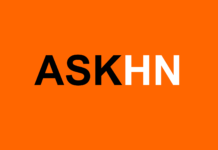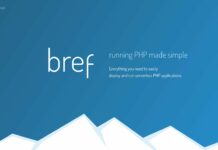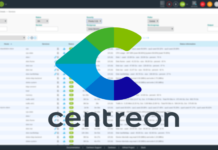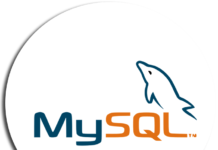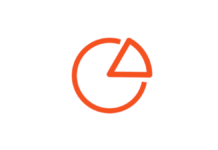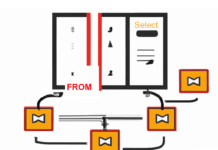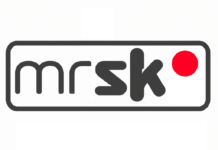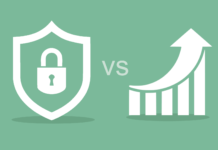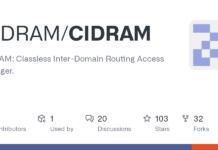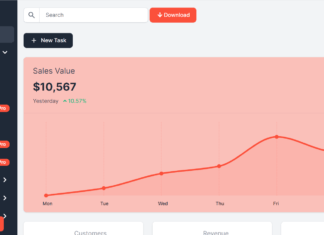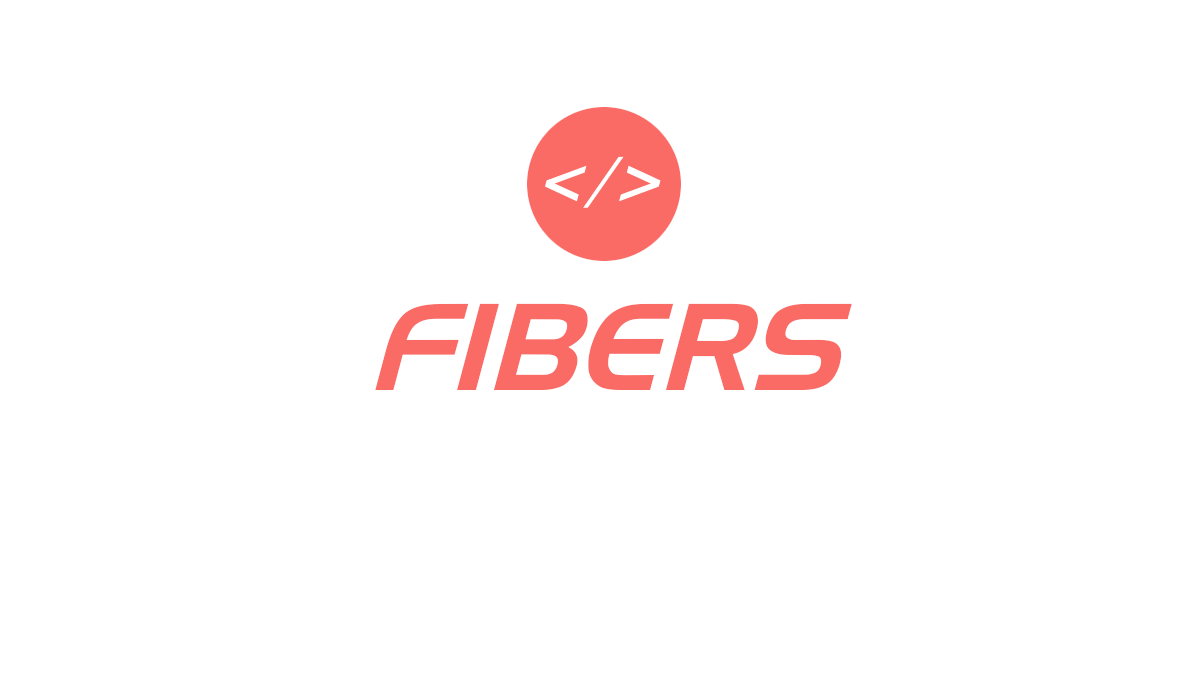As PHP developers, we have a responsibility to ensure that the code we write is secure and free from vulnerabilities. Failing to do so could result in serious consequences, from data breaches to website defacements. In this article, we’ll take a look at ten of the most common PHP security vulnerabilities, as well as the steps you can take to prevent them from being exploited. Whether you’re a seasoned developer or just starting out, it’s crucial to stay informed about these potential threats and take proactive measures to protect your code and your users’ data.
II. Injection Vulnerabilities
SQL injection and how to prevent it
SQL injection is a type of attack where an attacker can manipulate an application’s SQL queries by injecting malicious code. It’s one of the most common vulnerabilities in PHP applications, and it can be very dangerous. Attackers can use SQL injection to steal sensitive data, modify or delete data, and even take control of the application.
Preventing SQL injection is relatively straightforward but requires a good understanding of how to write secure SQL queries. One way to prevent SQL injection is to use prepared statements with parameterized queries. Prepared statements can be used with PDO or mysqli to ensure that user input is properly sanitized and validated before it’s used in a query.
Another way to prevent SQL injection is to use an Object Relational Mapping (ORM) framework like Doctrine. These frameworks handle the creation and execution of SQL queries for you, making it much more difficult for attackers to inject malicious code.
In addition to these technical solutions, it’s also important to practice good coding habits to prevent SQL injection. This includes validating user input, sanitizing data, and limiting user privileges to only the necessary actions.
Command injection and LDAP injection
In addition to SQL injection, there are other types of injection attacks that can be exploited by hackers to compromise the security of a PHP application. Two common examples are command injection and LDAP injection.
Command injection involves executing malicious code in the command line of a server. This can happen when a PHP application passes unfiltered user input to the command line without proper validation. To prevent command injection, it’s important to sanitize all user input and avoid using shell_exec or other similar functions that allow direct execution of commands.
LDAP injection is a type of injection attack that can occur when user input is used in LDAP queries. If the input is not properly sanitized, it can be used to modify or extract sensitive information from the LDAP directory. To prevent LDAP injection, it’s important to use parameterized queries and input validation when constructing LDAP queries.
By being aware of these different types of injection attacks and taking steps to prevent them, developers can significantly improve the security of their PHP applications.
III. Cross-Site Scripting (XSS)
Different type of XSS
Cross-site scripting (XSS) is a type of attack where an attacker injects malicious code into a web page, which then runs on the user’s browser. This allows the attacker to steal sensitive information, modify the contents of the web page, or redirect the user to a malicious website.
There are several types of XSS attacks, including stored XSS, reflected XSS, and DOM-based XSS. Stored XSS occurs when an attacker injects malicious code into a website that is then stored on the server and executed whenever a user accesses the page. Reflected XSS occurs when an attacker injects malicious code into a URL, which is then reflected back to the user’s browser. DOM-based XSS occurs when an attacker injects malicious code into the Document Object Model (DOM) of a web page, which can then be executed by the user’s browser.
XSS attacks can be categorized into two types: persistent and non-persistent. Persistent XSS attacks involve malicious code that is stored on the server and executed whenever a victim accesses a particular page. Non-persistent XSS attacks, on the other hand, involve malicious code that is sent to the server as part of a request and then reflected back to the victim’s browser.
Preventing XSS attacks
To prevent XSS attacks, it is important to validate all input data and encode all output data. Input validation should ensure that user-supplied data is of the expected type and within acceptable ranges. Output encoding should be used to ensure that all data displayed to users is properly escaped and cannot be interpreted as executable code by their browsers.
Other measures that can be taken to prevent XSS attacks include using a Content Security Policy (CSP) to limit the sources of executable code, disabling the execution of inline scripts and styles, and enabling browser protections such as the SameSite attribute for cookies.
IV. Cross-Site Request Forgery (CSRF)
How CSRF attacks work
Cross-site request forgery (CSRF) attacks are a type of attack where an attacker tricks a victim into performing an action on a website without their knowledge or consent. The attacker achieves this by crafting a malicious request that exploits the victim’s already authenticated session with the website.
For example, let’s say there’s a website that allows users to update their profile information by submitting a form. The form includes fields for the user’s name, email address, and a profile picture. When the user submits the form, the website updates their profile with the new information.
An attacker could craft a malicious website or email that includes a hidden form that submits the victim’s profile information to the website. If the victim is already authenticated with the website in question, and they visit the attacker’s site or click the link in the email, the malicious form will submit their profile information without their knowledge or consent.
Best practices for preventing CSRF
To prevent CSRF attacks, web developers should use anti-CSRF tokens, also known as “nonce” tokens, in their web applications. An anti-CSRF token is a unique value that is generated by the server and included in the form as a hidden input. When the user submits the form, the server checks the token to make sure it matches the expected value, and rejects the request if it does not.
Additionally, web developers should ensure that their web applications do not perform sensitive actions based solely on GET requests. By using POST requests, developers can help ensure that a user is deliberately submitting a form rather than accidentally following a link.
By taking these precautions, web developers can help prevent CSRF attacks and protect their users’ data and privacy.
V. Session Hijacking
How session hijacking works and how to prevent it.
Session hijacking is a type of attack where an attacker takes over a legitimate user’s session. This can give the attacker unauthorized access to sensitive information or actions that the user is authorized to perform. There are a few ways that session hijacking can occur.
One way is through the use of session IDs. Session IDs are tokens that are used to identify a user’s session. If an attacker is able to obtain a user’s session ID, they can use it to hijack the session. This can happen if the session ID is transmitted over an unsecured channel, such as through an HTTP cookie.
Another way that session hijacking can occur is through the use of man-in-the-middle attacks. In a man-in-the-middle attack, the attacker intercepts the communication between the user and the server, and can then hijack the user’s session.
To prevent session hijacking, there are a few steps that developers can take. One important step is to use secure session management techniques, such as generating random session IDs that are difficult to guess. It’s also important to transmit session IDs over secure channels, such as through HTTPS.
In addition, developers can use techniques like IP validation and user agent validation to prevent session hijacking through man-in-the-middle attacks. These techniques involve verifying that the IP address and user agent of the user match the ones that were used to establish the session.
By taking these steps to prevent session hijacking, developers can help to ensure that user sessions are secure and that sensitive information remains protected.
Session management techniques
Secure session management is crucial for preventing session hijacking attacks. Session hijacking occurs when an attacker gains access to a user’s session ID and uses it to impersonate the user. This can happen if the session ID is stolen via an unsecured connection or if the session ID is exposed through a vulnerability in the application.
To prevent session hijacking, it’s important to use secure session management techniques. One technique is to regenerate session IDs after a user logs in, logs out, or changes their privilege level. This helps prevent attackers from using stolen session IDs to impersonate a user.
Another important technique is to use secure cookies. When cookies are used to store session IDs, it’s important to set the ‘secure’ flag to ensure that the cookie is only sent over secure connections (HTTPS). This helps prevent attackers from intercepting the cookie and using it to hijack the user’s session.
In addition to these techniques, it’s important to use strong session IDs that are difficult to guess. This can be achieved by using a combination of random numbers and letters and making the session ID long enough to reduce the chances of guessing.
Overall, by implementing these secure session management techniques, you can help prevent session hijacking attacks and keep your application and users safe.
VI. File Upload Vulnerabilities
Potential dangers of allowing file uploads
Allowing users to upload files to your website can be a powerful feature, but it can also introduce serious security risks if not implemented carefully. Attackers can use file uploads to upload malicious files, such as scripts or viruses, to your server and use them to carry out attacks.
One common vulnerability associated with file uploads is called a file inclusion vulnerability. This occurs when an attacker is able to upload a file and trick the server into including it in a web page or script execution. For example, an attacker may upload a file containing PHP code and use it to execute arbitrary commands on your server.
Another risk associated with file uploads is the potential for users to upload files with malicious content, such as viruses or malware. These files can then be downloaded by other users and infect their systems, causing serious harm.
To prevent these types of attacks, it’s important to implement proper security measures for file uploads. This may include:
- Limiting the types of files that can be uploaded to your server. For example, you may only allow image files, documents, or other types of files that are essential to your website.
- Checking uploaded files for malicious content using antivirus software or other scanning tools. This can help prevent malware from being uploaded to your server.
- Storing uploaded files in a separate directory on your server and preventing them from being executed. This can help prevent file inclusion attacks and other types of exploits.
- Ensuring that uploaded files are not accessible to the public. This may involve setting proper file permissions or implementing user authentication to restrict access to uploaded files.
Tips for securing file uploads
Allowing users to upload files to your website can be a major security risk if not implemented properly. Attackers can use file uploads to execute malicious code on your server or to upload malicious files that can be executed by unsuspecting users. Here are some tips for securing file uploads:
- Validate file types: Use server-side validation to ensure that uploaded files are of the correct file type. Do not rely on client-side validation, as this can be easily bypassed.
- Limit file size: Set a limit on the maximum file size that can be uploaded to prevent users from uploading excessively large files that can cause performance issues.
- Rename files: Rename uploaded files to prevent attackers from guessing the filename and accessing the file directly.
- Use a secure directory: Store uploaded files in a secure directory that is not accessible to the public, and restrict access to the directory using file permissions.
- Scan for viruses: Use antivirus software to scan uploaded files for viruses and malware.
- Use a content delivery network (CDN): Consider using a CDN to host and serve uploaded files, as this can help to mitigate some security risks.
VII. Broken Authentication and Authorization
What about Broken authentication and authorization
Broken authentication and authorization occur when an attacker gains access to a user’s login credentials or is able to bypass authentication altogether, allowing them to perform actions on behalf of the user. This type of vulnerability is a significant security risk because it can allow an attacker to access sensitive information, modify or delete data, or perform other malicious actions.
There are several common causes of broken authentication and authorization, including weak or easily guessable passwords, session fixation, and vulnerabilities in authentication protocols. Attackers can exploit these vulnerabilities through a variety of techniques, such as brute-force attacks, social engineering, or exploiting vulnerabilities in web applications.
To prevent broken authentication and authorization, it is important to use strong authentication mechanisms, such as multi-factor authentication, and to enforce password policies that require users to choose complex passwords and change them regularly. It is also important to regularly review and update authentication protocols to ensure they are secure and to monitor for any suspicious activity or attempts to bypass authentication mechanisms.
Offer tips for preventing broken authentication and authorization
Preventing broken authentication and authorization is critical to ensuring the security of your PHP application. There are several steps you can take to reduce the risk of these vulnerabilities:
- Use secure password storage techniques: Storing passwords in plain text or using weak encryption methods can make them vulnerable to attack. Instead, use a strong hashing algorithm like bcrypt to hash and store passwords securely.
- Implement proper user roles and permissions: Ensure that users are only given the access they need to perform their specific tasks. Implement role-based access control (RBAC) to enforce proper authorization and prevent unauthorized access.
- Use multi-factor authentication (MFA): MFA adds an extra layer of security to the authentication process by requiring users to provide two or more forms of identification, such as a password and a fingerprint scan.
- Regularly review and update access controls: Review user access regularly to ensure that permissions are still appropriate and necessary. Remove access for any users who no longer require it.
VIII. Information Disclosure
How you can give attackers access to sensitive data
Information disclosure vulnerabilities can allow attackers to gain access to sensitive data that they shouldn’t be able to see. This can include passwords, credit card numbers, personal information, and other sensitive data. These vulnerabilities can occur due to a variety of reasons, such as incorrect configuration settings, inadequate access controls, or unpatched software.
Attackers can exploit these vulnerabilities to gain access to sensitive data that can be used for malicious purposes, such as identity theft or financial fraud. It’s important to take steps to prevent information disclosure vulnerabilities and protect sensitive data from unauthorized access.
Here are some real-world scenarios of how information disclosure vulnerabilities can occur:
- Directory Listing: Sometimes, web servers are configured to show the contents of a directory when no index file is present. This can be a problem if the directory contains sensitive information that should not be exposed. An attacker can simply browse to the directory and access the files.
- Error Messages: Error messages can reveal information about the system that can be useful to an attacker. For example, if an error message reveals that a certain file is missing, an attacker can use this information to try to exploit the system.
- Misconfigured Access Controls: Misconfigured access controls can allow an attacker to access sensitive information. For example, if a file containing sensitive information is not properly secured, an attacker may be able to access it by simply guessing the filename or using a directory traversal attack.
- Debugging Information: Debugging information left in the code can reveal sensitive information, such as database credentials or API keys. This information can be used by an attacker to gain access to the system.
- Backup Files: Backup files may contain sensitive information, such as user data or configuration files. If these files are not properly secured, an attacker can simply download them and access the information they contain.
- Improperly configured servers or web applications that allow users to view directories or files that should not be accessible
- Insecure communication channels, such as unencrypted HTTP connections, that allow eavesdropping or man-in-the-middle attacks
Best practices for preventing information disclosure
There are several ways to prevent information disclosure vulnerabilities, such as:
- Restricting access to sensitive data: Only authorized personnel should have access to sensitive data. Access controls should be implemented to restrict access to sensitive data based on the user’s role and level of authorization.
- Encrypting sensitive data: Encryption can be used to protect sensitive data from unauthorized access. This can include encrypting data at rest and in transit.
- Properly configuring servers and applications: Servers and applications should be properly configured to prevent information disclosure vulnerabilities. This can include setting appropriate permissions, disabling unnecessary services, and using the latest security patches.
- Use secure communication channels: Always use HTTPS for communication between the server and clients to encrypt data in transit.
- Secure sensitive files and directories: Ensure that sensitive files and directories are not accessible to unauthorized users or systems by configuring appropriate file permissions, using authentication mechanisms, or implementing access control lists.
- Properly handle error messages: Ensure that error messages do not contain sensitive data, and provide only general information that can help developers diagnose and fix issues.
- Use secure logging practices: Ensure that logs do not contain sensitive data and are not accessible to unauthorized users or systems.
By implementing these measures, you can help protect sensitive data from information disclosure vulnerabilities and keep it out of the wrong hands.
IX. Cross-Origin Resource Sharing (CORS)
What’s CORS is and how it can be exploited.
CORS (Cross-Origin Resource Sharing) is a security feature implemented by web browsers to prevent unauthorized access to resources on a different domain. However, misconfigurations in CORS policies can leave websites vulnerable to attacks such as cross-site request forgery (CSRF) and data theft.
When a website allows cross-origin requests without proper controls, it opens up the possibility for attackers to trick users into performing actions on their behalf or steal sensitive data from the website. This can happen if the website allows requests from any origin, or if it allows overly permissive methods such as “PUT” and “DELETE”.
For example, an attacker could create a website that includes malicious code to exploit a misconfigured CORS policy on another website. When a user visits the attacker’s website, the code sends a request to the vulnerable website with the user’s session cookie, allowing the attacker to perform actions on the user’s behalf.
Let’s say you have a website that allows users to upload images and share them with others. You have implemented a strict Content Security Policy (CSP) to prevent cross-site scripting (XSS) attacks, but you have not implemented Cross-Origin Resource Sharing (CORS) correctly.
An attacker could create a malicious website and include an image from your website in the HTML code of their site. The attacker could then use JavaScript to read the response from your site, which would include the image data. This would allow the attacker to steal the image and any sensitive information that may be stored within it, such as metadata or EXIF data.
Another scenario where CORS can be exploited is with cross-site request forgery (CSRF) attacks. An attacker could create a malicious website that includes a form that submits a request to your site. The attacker could then use JavaScript to make a request to your site on behalf of the user, effectively bypassing any security measures that you have in place. This could allow the attacker to perform actions on your site as if they were the user, such as changing passwords or making purchases.
To prevent these types of attacks, it’s important to properly implement CORS on your website. This involves configuring your web server to send the appropriate Access-Control headers and using the appropriate response headers in your application. Additionally, you should consider implementing other security measures such as CSRF tokens to prevent CSRF attacks.
Tips for preventing CORS attacks
Cross-Origin Resource Sharing (CORS) is a mechanism that allows resources to be requested from a different domain than the one that served the original resource. While this can be a useful feature, it can also be exploited by attackers to bypass the same-origin policy and steal sensitive data.
To prevent CORS attacks, it’s important to properly configure your server-side settings and use the correct HTTP headers. Here are some best practices to follow:
- Set appropriate Access-Control headers: When serving cross-origin requests, it’s important to include the appropriate
Access-Control-Allow-Originheader to limit the domains that are allowed to access the resource. You should also include theAccess-Control-Allow-Credentialsheader if your resource requires authentication. - Validate user input: As with any other security vulnerability, input validation is key to preventing CORS attacks. Be sure to sanitize any user input to prevent attackers from injecting malicious scripts into your application.
- Implement rate limiting: To prevent attackers from launching brute-force attacks against your CORS resources, consider implementing rate limiting to restrict the number of requests that can be made in a given time period.
- Use server-side authentication: Implement server-side authentication for every request and ensure that it is properly configured to restrict access to only authorized users.
- Use HTTPS: Always use HTTPS to encrypt communication between the client and server. This can help prevent man-in-the-middle attacks and other security vulnerabilities.
- Use Content Security Policy (CSP): Implement CSP headers to specify the sources of content that are allowed to be loaded on your web pages. This can help prevent cross-site scripting attacks and other security vulnerabilities.
- Stay up-to-date: Keep your software and security systems up-to-date to ensure that you are using the latest security patches and best practices. This can help prevent new vulnerabilities from being exploited.
X. Insecure Cryptographic Storage
Properly securing sensitive data
Protecting sensitive data is crucial for any web application, as it can have significant consequences if compromised. Passwords and user data, such as names, addresses, and credit card information, must be properly secured to prevent unauthorized access.
One way to secure sensitive data is by using hashing algorithms to store passwords. Hashing is a one-way process that converts plaintext passwords into a fixed-length string of characters, making it challenging for attackers to reverse-engineer passwords if they gain access to the database. The most common hashing algorithms used in PHP are bcrypt, SHA-256, and SHA-512.
Another way to secure sensitive data is by encrypting it. Encryption is a process of converting plain text data into an unreadable format using a secret key, which only authorized parties can use to decrypt the data. PHP has built-in encryption functions such as OpenSSL, which can be used to encrypt sensitive data.
In addition to encryption and hashing, developers should also ensure that sensitive data is transmitted securely over the network. This can be done by using secure communication protocols such as HTTPS and SSL/TLS.
It’s also essential to follow the principle of least privilege when designing the application’s access control system. This means that users should only be given the minimum level of access required to perform their tasks, reducing the risk of unauthorized access to sensitive data.
Best practices for securing sensitive data
Properly securing sensitive data is critical for protecting your users’ information and preventing security breaches. Here are some best practices to follow:
- Use a strong hashing algorithm: When storing passwords, use a strong hashing algorithm like bcrypt or Argon2. These algorithms are designed to be slow, which makes it more difficult for attackers to brute-force passwords.
- Salt your passwords: Salting is the process of adding random data to a password before hashing it. This makes it much more difficult for attackers to use precomputed rainbow tables to crack passwords.
- Use SSL/TLS: When transmitting sensitive data over the internet, always use SSL/TLS encryption. This will ensure that data is encrypted in transit and cannot be intercepted by attackers.
- Use secure storage: Store sensitive data in a secure location, such as a database with proper access controls. Be sure to encrypt any data that is stored on disk to prevent unauthorized access.
- Implement access controls: Implement access controls to restrict access to sensitive data to only authorized users. This includes using strong authentication mechanisms, such as two-factor authentication, and limiting the amount of data that each user can access.
XI. Conclusion
In this article, we’ve covered some of the most common types of PHP security vulnerabilities, including SQL injection, XSS attacks, CSRF attacks, broken authentication and authorization, information disclosure, and CORS exploits. We’ve also offered tips for preventing these types of attacks, such as input validation, output encoding, proper user authentication, and secure session management.
It’s important for PHP developers to be aware of these vulnerabilities and take the necessary steps to prevent them in their applications. Additionally, they should keep up-to-date with the latest PHP security best practices and tools, such as security scanners and code analysis tools.
For more information on PHP security vulnerabilities and best practices, we recommend the following resources:
- The OWASP PHP Security Project (https://owasp.org/www-project-php-security/)
- The PHP Security Consortium (https://phpsec.org/)
- PHP: The Right Way – Security (https://phptherightway.com/#security)

